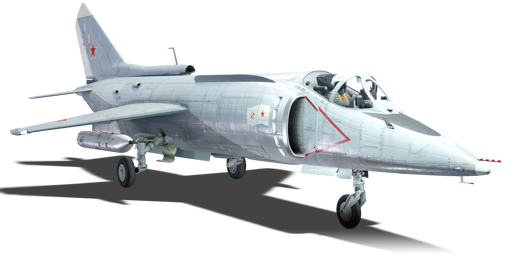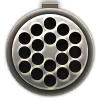



The Yak-38 had many problems, especially with the powerplant, which was complex, heavy, and underpowered, and suffered from inexcusable overheating issues, with some reports even stating that the Yak-38 was grounded during the hot summers of the Mediterranean sea due to the engine overheating dangerously during VTOL take-offs. By comparison to its adversaries such as the Harrier family, the initial Yak-38 was abysmally underperforming. These issues quickly led to a urgent request from the Soviet navy to upgrade the Yak-38 in the late '70s and early '80s to address these issues. This directly resulted in the upgraded Yak-38M, which entered service in 1985. The main upgrade in the Yak-38M variant, was the installation of a new set of engines, the Tumansky R-28V-300 and Rybinsk RD-38 engines respectively, to correct the issues with overheating and low power of the previous model, while also upgrading the aircraft's avionics and armament suite to include new all-aspect variants of the R-60, and better guidance and autopilot systems.
The Yak-38M was introduced in Update "New Power". Like the Harrier, it is an aircraft with a VTOL capability. The Yak-38M is externally almost identical to the Yak-38 and the few differences are difficult to identify in combat, aside from the plane's default livery. These features are the tail boom (long and coloured in red for the 38M while short for the 38) and the forward Pitot tube (striped for the 38M and unicolour for the 38). The Yak-38 is very underwhelming in flight performance, but makes up for it in great armament options and ordnance, and acts as a stepping stone to the far more powerful successor in Soviet VTOL aircraft, the formidable Yak-141.
flaps
flaps
flaps
brake
| Belt | Belt filling | Armor penetration (mm) at a distance: | |||||
|---|---|---|---|---|---|---|---|
| 10 m | 100 m | 500 m | 1000 m | 1500 m | 2000 m | ||
| HEFI-T/AP-I/HEF-I | 31 | 29 | 21 | 15 | 10 | 7 | |
| HEF-I/AP-I/AP-I/AP-I | 31 | 29 | 21 | 15 | 10 | 7 | |
| HEFI-T/HEF-I/HEFI-T/HEF-I/AP-I | 31 | 29 | 21 | 15 | 10 | 7 | |
| AP-I/HEF-I/HEF-I | 31 | 29 | 21 | 15 | 10 | 7 | |
| Name | Weight | Slot | ||||
|---|---|---|---|---|---|---|
| 43.5 kg |  |  |  |  | ||
| 16 × | 132.2 kg |  |  |  |  | |
| 32 × | 269.3 kg |  |  | |||
| 20 × | 376 kg |  |  | |||
| 235 kg |  |  |  |  | ||
| 289 kg |  |  | ||||
| 3 × | 342 kg |  |  | |||
| 250 kg |  |  |  |  | ||
| 478 kg |  |  | ||||
| 374 kg |  |  | ||||
| 163.8 kg |  |  |  |  | ||
| Delta-NG targeting pod | 20 kg |  | ||||
| 114 kg |  |  | ||||












Flight performance |
|---|
Survivability |
|---|
Weaponry | |||
|---|---|---|---|